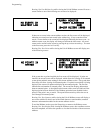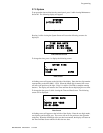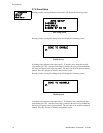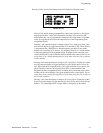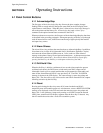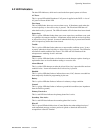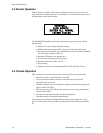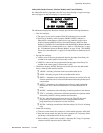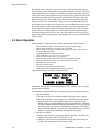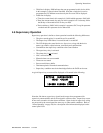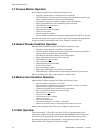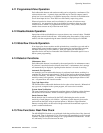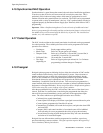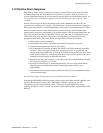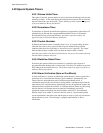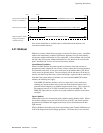
Operating Instructions
160 MS-9200UDLS PN 52750:E1 01/27/09
Pressing the Acknowledge/Step or Alarm Silence key will cause the pulsing piezo to
silence and the system Trouble LED to change from flashing to on steady. This block
acknowledgment occurs regardless of the number of troubles, alarms and supervisory
events active in the system. When the Acknowledge/Step key is pressed and at least one
new alarm or trouble exists in the system, the ‘acknowledge’ message is sent to the
printer and history file. If the trouble clears, either before or after the Acknowledge/
Step key is pressed, the ‘clear trouble’ message is sent to the printer and history file.
If all troubles clear and there are no supervisory or fire conditions active in the system,
the system returns to normal mode operation and the System All Normal message is
shown on the LCD display and sent to the history and printer files. The auto-restore
feature will restore cleared troubles even if the troubles were never acknowledged.
Note that pressing the Alarm Silence key when only troubles exist in the system will
have the same effect as pressing the Acknowledge/Step key except the Alarm Silenced
LED will light.
4.5 Alarm Operation
Alarm operation is similar to trouble operation with the following differences:
• The piezo sounder produces a steady output as opposed to a pulsed output
• The Fire Alarm LED flashes 1 second On and 1 second Off
• The LCD displays Alarm along with the device name, type, address, adjective/noun,
associated zones and time/date
• Communicate the alarm to the Central Station
• Alarms latch and are not allowed to clear automatically
• Alarms activate software zones if so programmed
• Timers for Silence Inhibit, Autosilence and Trouble Reminder are started
• Alarms activate the general alarm relay and general alarm zone Z00
• The trouble relay is not activated
• Store event in history buffer
• Terminate upload or download communications
• Alarms must be Acknowledged before the FACP can be reset
A typical alarm display would be as illustrated below:
Note that the device type, which in this example is PULL STATION, can be any other
programmable alarm type.
The information displayed in the above example provides the following information:
• First line in display:
The type of event; in this example ALARM indicating an alarm condition
Device type identifier; in this example, PULL STATION indicates a manual
pull box. Other device type identifiers which can be displayed include
SMOKE (ION) for Ionization Detector, HEAT for Heat Detector, CONTROL
for Control Module and MONITOR for Monitor Module, PULL STATION for
a manual pull box, etc. Refer to "Edit Detector" on page 66, "Edit Module
Screen for Monitor Module" on page 76 and "Edit Module Screen for Control
Modules" on page 85 for information on additional device types.
• Second line in display:
<ADJ>; refers to the user programmed adjective descriptor from library list
resident in the control panel or custom entry via PC.
<NOUN>; refers to the user programmed noun descriptor from library list
resident in the control panel or custom entry via PC.
ALARM PULL STATION
<ADJ> <NOUN>
Z000
10:00A 010806 1M001



